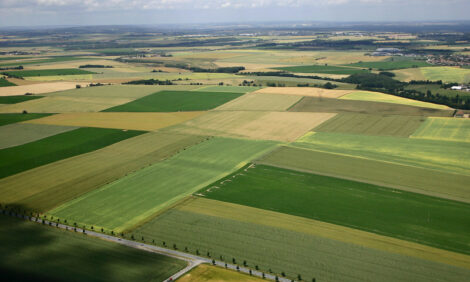



Weekly Outlook: Cattle Prices To “Ride The Recovery” Upward
US - “Ride the recovery” may be the theme for the cattle industry in coming months. Issued by Chris Hurt Extension Economist Purdue University.|
Extension Economist Purdue University |
That, of course, is the economic recovery that is thought to be underway. A host of economic indicators suggest that the recession has ended and the economy has more positive signs than negative. This is true for the US and the world economy.
Unfortunately the beef industry also rode the recession downward. So far this year, through the month of September, beef production has been down by five per cent but finished cattle prices have been almost $11 lower than in the same period last year. Nebraska finished steers averaged $93.60 per live hundredweight in the January to September period in 2008. This year those values dropped to $82.75. Steer calf values have also been about $11 per hundredweight lower and feeder cattle about $9 lower.
Beef and cattle prices move downward with recession and upward with recovery. They are generally more directly impacted by changes in economic prospects than pork or poultry markets. The indicators of recovery are beginning to become more numerous in such data as the rise in the average length of work week, rising building permits, falling numbers of new claims for unemployment, and of course the rising stock market. The recovery is expected to be slow by historic standards with unemployment remaining high into 2010. However, the unemployment rate is a lagging indicator and not the one to use as the measure of recovery.
Inflationary investing may be another reason cattle are underpriced. In the past six weeks there has been a resurgence of inflationary buying in futures markets. This has also been related to the continued weakening of the US dollar where the lead futures contract has been down five percent since 1 September. Since that date, the lead futures contracts for various commodities have been shooting upward: corn up 19 per cent, copper and gold five to ten per cent higher, and crude oil up 14 per cent. In contrast, the lead contract for live cattle futures has been down about two per cent. This may well mean that cattle are cheap relative to other commodities.
The fundamentals are positive for beef as well. Production will continue to drop as both export and domestic demand improve with the recovery. USDA expects exports to increase by three per cent over the next 12 months. Given that the rest of the world may recover more quickly than the US with the dollar to stay weak, exports could do even better. Per capita available supplies in the US will decline by two per cent over the coming 12 months and competitive supplies of pork per person will be down five per cent.
While more cattle have moved into feedlots in recent months, the overall indicators suggest that the breeding herd will continue to drop in the January 2010 inventory report. Cheaper corn, meal, and feed ingredients late this summer did cause a larger number of lighter weight calves to move into feedlots. In August and September, placements of cattle weighing under 700 pounds were up eight per cent while those over 700 pounds were up one per cent. With corn and feed prices moving upward in recent weeks, it is likely that placements in October will slow once again. Perhaps more importantly was that the number of heifers in feedlots on 1 October was up four per cent, indicating a relatively low rate of heifer retention to go back into breeding herds. This supports a one to two per cent drop in beef cow herd numbers in the January 2010 inventory.
Cattle prices are expected to generally move upward over the coming year. Nebraska finished steers are expected to rise from the current low $80s to the middle $80s by the end of the year. The general pattern to higher prices is expected to continue in the first quarter with prices in the mid-to-higher $80s. Early spring daily highs could move into the very low $90s or higher depending on the strength of the economic recovery. Summer prices normally are a few dollars lower, but that may not occur in the summer of 2010 as prices could stay in the low to mid $90s.
In 2008 Nebraska choice steers averaged $92, fell to about $83 with the recession this year and are expected to climb back to the low $90s with the recovery in 2010. So the theme for the beef industry in the coming year is “ride the recovery.” What are the threats? The clearest threat is that the economic recovery will be anemic, or that there is a second recessionary dip.
Assuming the industry is able to ride the recovery, the implications are fairly clear. Stay long cattle at least for now. This means retaining ownership of calves for a longer period, considering feeding out calves rather than selling them this fall, and for feedlot cattle, waiting a bit to forward price the finished cattle in order to give inflation investors a little time to locate the cattle futures trading pit.


